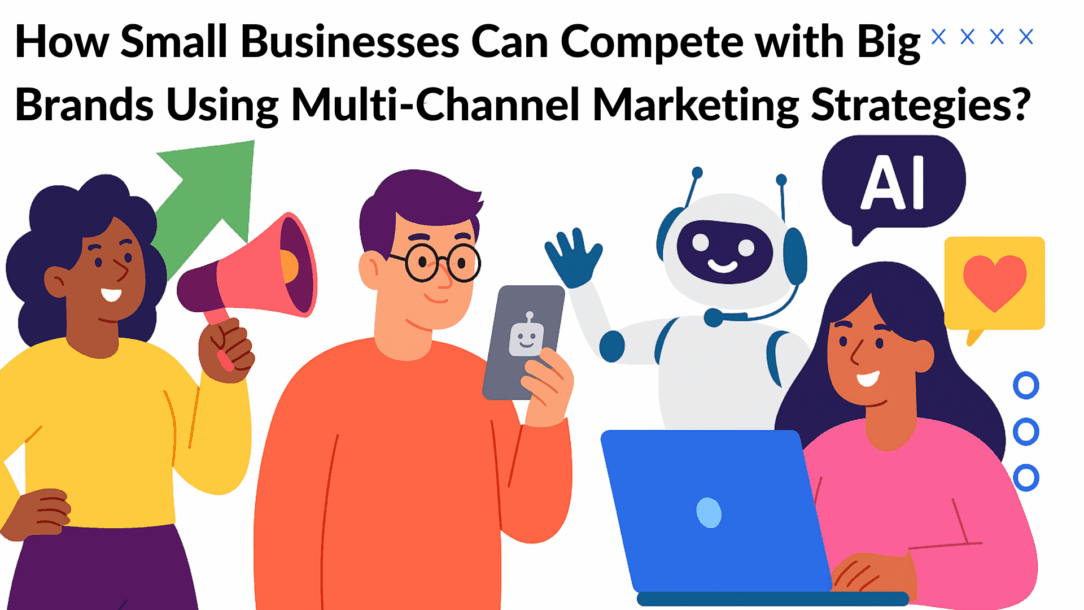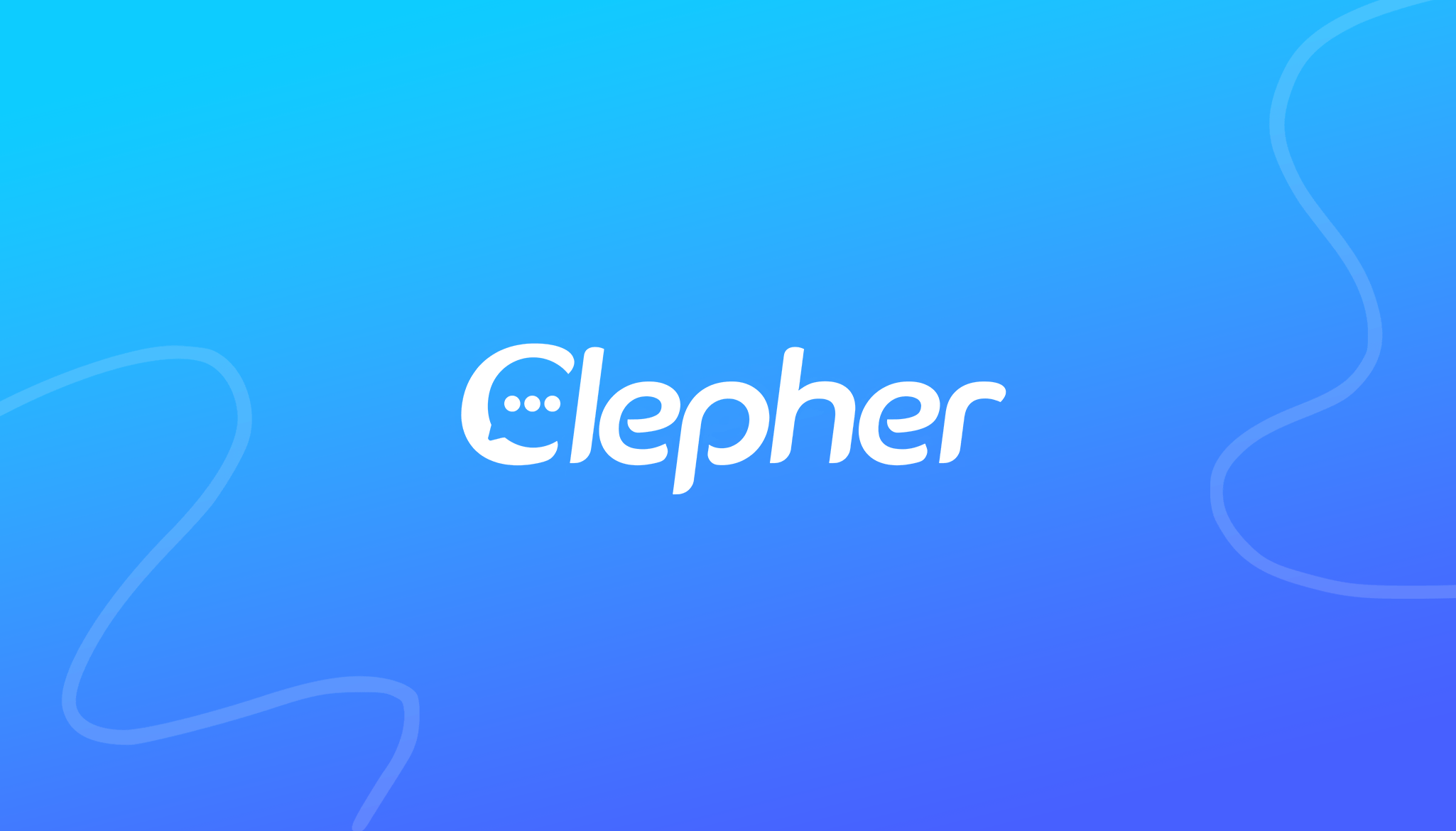Small business? Big brands love you. Why? Because while they throw money at every channel, you can do it smarter using multi-channel marketing.
Imagine this: a person clicks your Facebook ad, chats with a bot in Messenger, gets a personalized email, and buys — all without you juggling 10 tools. That’s what multi-channel done right looks like.
In 2024, 40% of small businesses say they’re already using AI tools like chatbots. Yet fewer than 10% are doing it well. That means there’s room. A lot of room.
This article isn’t about copying big brands. It’s about outsmarting them — using lean budgets and smart tech. We’ll walk you through multi-channel strategies that let you use chatbots, automation, and AI so tight, your conversions feel unfair.
Ready to flip the script and make your small brand feel unstoppable? Let’s dive in.
The Power Shift: Why Small Businesses Now Have a Fighting Chance
For decades, big brands had the upper hand — deep pockets, dedicated marketing teams, and access to data small businesses could only dream of. But 2025 changed the game.
Smart Tech > Big Budgets
AI and automation have made powerful tools affordable. According to a HubSpot 2025 survey, over 61% of small businesses now use at least one AI-powered marketing tool — from content generation to predictive customer behavior analysis.
And here’s the best part: you don’t need millions to create impact anymore.
A small café can now run a hyper-localized Instagram ad, follow up with a chatbot on WhatsApp, and automate customer re-engagement through email — all for under $50 a month. Five years ago, this kind of campaign was reserved for enterprise budgets.
Personalization Is the New Equalizer
Big brands rely on volume. Small businesses thrive on connection.
That’s where personalization wins.
Data shows that 78% of consumers are more likely to buy from a brand that remembers their preferences and engages authentically (Salesforce, 2025).
When a small brand uses AI to send customized messages, suggest products, or even reply instantly via chatbot — it creates trust and familiarity no billboard can buy.
This is how small e-commerce brands are now competing head-to-head with retail giants: not by being louder, but by being more human through data.
From Followers to Fans
Big brands count followers. Small ones build relationships.
By blending AI insights with authentic storytelling, local businesses are nurturing online communities that actually convert.
Whether it’s a bakery using WhatsApp to announce fresh batches every morning or a salon sending personalized offers based on previous bookings — this is how the “small guys” are now stealing attention from major players.
In short, the future doesn’t belong to the biggest advertisers anymore — it belongs to the smartest communicators.
Understanding Multi-Channel Marketing: It’s Not Being Everywhere — It’s Being Remembered
A few years ago, The Original Tamale Company in Los Angeles was just another local food brand. No marketing agency, no fancy ad budget. But one day, they posted a short, AI-assisted video — a funny, meme-style clip written with ChatGPT.
Within a week? It went viral.
Millions of views. Lines outside their small store.
They didn’t outspend big brands. They outsmarted them.
That’s the power of modern multi-channel marketing — showing up smart, not loud.
Why Consistency Beats Presence
According to ZipDo’s 2025 Multi-Channel Marketing Report, 87% of customers say a consistent brand experience matters more than the number of channels.
Think about that.
You don’t need to be on 10 platforms. You need to make sure your voice sounds the same on the two that matter most.
A brand that looks, feels, and replies consistently across email, Instagram, and chatbot gets remembered. One that’s all over the place just becomes background noise.
Even Ascend2 found that only 20% of marketers actually personalize deeply across all channels — leaving a huge 80% gap for smaller, faster teams like yours to jump in and win.
AI: Holding Multi-channel Marketing Together
AI is no longer a tech luxury — it’s the connector.
It’s what links your Instagram DM to your website chatbot to your follow-up email.
Let’s say someone clicks your Facebook ad at night. They get greeted by an AI chatbot:
“Hey, want help choosing the right plan?”
By morning, they receive an email tailored to what they asked about.
That’s not a coincidence — that’s automation and intent tracking working together.
Adobe’s latest Customer Engagement Report showed that brands that anticipate user needs through AI tools see 2.8x higher retention.
You don’t need a full data team to do this. A smart chatbot plugin and an AI analytics tool can make your small business feel like Amazon.
The Lesson? Big Brands Have Budgets. You Have Speed.
Big companies need 10 meetings to approve one message.
You? You can adapt in an hour.
When you combine that agility with AI-powered insights and consistent storytelling, you stop competing with them — you outrun them.
The truth is, small businesses don’t lose because of size. They lose because they play by old rules.
In 2025, the brands winning aren’t the ones shouting the loudest — they’re the ones automating, personalizing, and showing up everywhere their customers hang out.
AI Is No Longer Optional — It’s the Equalizer
Here’s what the data says:
According to Salesforce’s 2025 SMB Trends Report, over 76% of small businesses using AI reported higher customer satisfaction and retention. Why? Because AI tools now do what used to require full marketing teams.
Tools like Clepher, HubSpot’s AI CRM, and Meta’s Advantage+ allow you to automate customer replies, predict buying behavior, and personalize campaigns at scale — without hiring more people.
So while big brands are still stuck approving ad creatives through five layers of management, you can launch, test, and optimize before they even hit “publish.”
Chatbots Are Your 24/7 Sales Team
Forget boring bots.
Chatbots in 2025 are powered by conversational AI that understands tone, intent, and timing.
A well-built chatbot doesn’t just respond — it sells.
Businesses using WhatsApp Business API and ChatGPT-powered flows have seen open rates over 90%, compared to 20–25% on email. That’s attention you can’t buy.
And it’s not just for eCommerce. Service brands, local stores, and even fitness coaches are using bots to qualify leads, handle bookings, and follow up automatically.
Multi-Channel = Multi-Revenue
If your business only lives on Instagram, you’re already losing.
Consumers switch between three to five platforms before making a purchase.
That’s why winning small businesses are everywhere — WhatsApp, Google My Business, TikTok, and even email — but with consistent branding and data-backed targeting.
AI now ties it all together. Tools like Zapier, Meta AI, and Google’s Performance Max let you sync conversations, track behavior, and move customers seamlessly from curiosity to conversion.
The Advantage You Already Have
Big brands have budgets.
You have speed.
You can test 10 campaigns in a week — they’ll spend that week in a meeting.
That agility is your edge. Combine it with AI and smart automation, and you stop competing on price — you start competing on experience.
Because in 2025, attention isn’t bought. It’s earned — through smart systems that never sleep and strategies that adapt faster than the algorithm.
Real Success Stories: Small Brands Beating the Giants
Everyone loves an underdog story — especially when it’s backed by smart marketing and cold numbers.
Let’s break down how small businesses have flipped the script on big brands using multi-channel power, automation, and AI-driven precision.
Dollar Shave Club vs. Gillette — Content + Multi-Channel Distribution
When Dollar Shave Club launched, Gillette owned 70% of the U.S. razor market.
Instead of fighting shelf-space wars, DSC used multi-channel storytelling — a viral YouTube video, consistent email marketing, retargeting ads, and a seamless subscription flow across social platforms.
Result?
Within three years, the startup grabbed 8% market share, forcing Gillette to drop prices for the first time in decades.
Lesson: Big brands buy reach. Smart brands create it — through connected, consistent experiences across channels.
Gymshark — Building a Global Brand from Instagram + Chatbots
Started in a garage in 2012, Gymshark didn’t run billion-dollar campaigns — it ran conversations.
They used Instagram DMs, influencer shoutouts, and later, AI chatbots to engage their community.
By combining social proof, personalized product drops, and quick replies, Gymshark built one of the fastest-growing fitness brands globally, now valued at over $1.4B.
Lesson: When your audience feels heard across platforms, your brand grows faster than any paid ad.
Local Café in Karachi — WhatsApp Automation Wins
A local café in Karachi used WhatsApp Business + Meta Ads to build a loyal community of 5,000+ repeat customers — without spending on expensive billboards.
Customers got daily menu updates, loyalty points, and personalized discount codes — all through chat automation powered by Zapier.
Result:
Repeat order rate rose 38%, and monthly revenue doubled in six months — pure example of multi-channel mastery done right.
The AI Layer — What All Winners Have in Common
None of these brands “got lucky.”
>They used data.
>They used automation.
>They understood that in 2025, success isn’t about being everywhere — it’s about being connected everywhere.
AI tools track behavior, predict intent, and push the right content to the right person on the right platform — instantly.
That’s how small businesses scale like giants.
How to Build Your Own Multi-Channel Strategy (Step-by-Step)
Here’s the truth: you don’t need a million-dollar budget — just a smart, connected system that keeps your audience engaged across touchpoints.
Let’s break it down like a marketer building a fire from scratch.
Define Your Core Audience (Not Just “Everyone”)
Stop talking to the crowd — talk to your entire audience.
Use tools like Meta Audience Insights, Google Analytics, or SparkToro to find:
- Where your audience hangs out
- What content do they actually interact with
- What problems are they solving daily
Pro Tip: Create two buyer personas — your “loyal customer” and your “target dream customer.”
Your content and campaigns should speak to both.
Pick 3 Core Channels — Don’t Go Everywhere
This is where most small businesses lose focus.
Instead of posting everywhere and burning out, pick three core channels that deliver visibility + conversions.
Example:
- Instagram (awareness)
- WhatsApp / Email (engagement & retention)
- Website / Chatbot (conversion)
Use AI scheduling tools like Buffer, Publer, or Predis.ai to automate posts and maintain rhythm even when you’re busy.
Build a Conversion Hub (Your Digital Storefront)
Every brand needs a “home base.”
That could be your website, a WhatsApp catalogue, or even a custom AI chatbot.
Make sure every ad, post, and email links back to this hub — where conversion happens.
💬 Tools:
- Clepher or Botpress for smart chat flows
- Tidio for AI-driven live chat
- Typeform + Google Sheets + Zapier to collect leads automatically
Automate, Don’t Complicate
Automation doesn’t mean losing the human touch — it means scaling it.
Use AI chatbots, email drips, and auto-replies to handle 60% of engagement automatically.
🧠 Smart stack for small businesses:
- Mailerlite / Brevo → Email automation
- Zapier / Make.com → Connect apps
- ChatGPT-powered chatbots → Personalized customer conversations
Each automated reply saves time and strengthens your brand’s presence across channels.
Track. Tweak. Repeat.
Data is your best strategist.
Use built-in analytics from Meta, Google, or WhatsApp Business to see:
- Which channel drives conversions
- What content brings clicks
- Where users drop off
Every 30 days, review results and tweak one thing at a time — messaging, visuals, or timing.
Small optimizations compound into massive growth.
Conclusion: Small Brands, Big Power
If you’ve made it this far, you already understand something most small businesses miss — you don’t compete by shouting louder, you win by connecting deeper.
The playing field has changed.
AI, automation, and multi-channel marketing tools have made it possible for a small shop in Karachi or a local bakery in Texas to talk to customers like a billion-dollar brand — 24/7, across every platform.
But the secret isn’t just being everywhere.
It’s creating one seamless experience across WhatsApp, Instagram, Messenger, email, and your site — so your customer feels like they’re talking to one brand, one voice, one friend.
And that’s exactly where Clepher steps in.
With Clepher, even a small business owner can deploy AI-powered chatbots that manage Instagram DMs, automate Messenger responses, and guide customers straight to checkout — while keeping the tone human, helpful, and personal.
In marketing today, attention is the real currency — and consistency is the investment that pays it back.
So whether you’re a small clothing label, a local café, or a service provider — remember this:
You don’t need to act big to grow.
You just need to act smart — and stay connected.
That’s how small businesses compete with big brands — one intelligent message, one chatbot, one loyal customer at a time.
Related Posts



